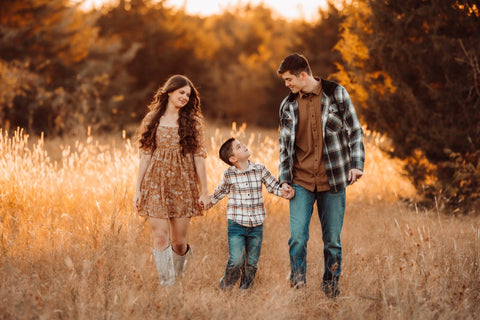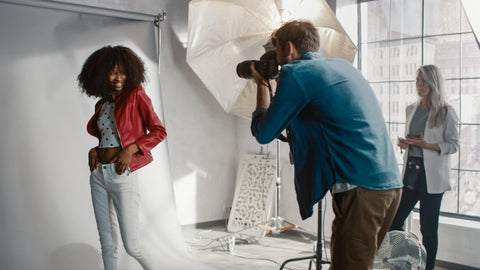- Lightroom Presets
- Mobile Presets
-
Photoshop
-
Learn
-
Support
-
Install
- Best Sellers
- Blog
By Pretty Presets on | No Comments

When documenting babies or children, whether they are crawling or walking, they are often quick and completely unpredictable. Your framing of them can change in an instant and so many things can go awry within the quick click of a shutter. Perhaps your lights didn’t trigger, your settings were off, or your bounce was horribly placed. Yes, sometimes we end up with a horribly underexposed photo.
It happens to all of us, even the pros. Don’t fret. There is a light at the end of this underexposed tunnel. As long as your hand was steady and the subject is in clear focus, an underexposed baby image can be saved through the magic of Lightroom. Here are ten steps on how…
It’s that simple. The first step is always to shoot RAW. It gives you more options and a larger spectrum to work with. Lightroom can be an extremely powerful tool when working with RAW images. Do they take up more room? Yes, they absolutely do but with bigger images, comes greater control.
Exposure is the best place to start in Lightroom. How much you increase the exposure is going to depend on just how underexposed your image originally was. Keep an eye on the brighter tones as you adjust and stop increasing your exposure once you lose sight of important details such as lines, textures, and color. For this baby portrait, which was incredibly underexposed, we went all the way up to +160.

Next, bump up your clarity. We went to +40 for this portrait. It will appear dramatic at first but since our next step after this is a shadow adjustment, try not to worry too much. You can always come back and adjust as needed. In fact, feel free to dance between the next few steps (2-5) until you find the perfect combination for your eye and style.
Lower light settings often bring deeper and darker shadows and in order to create a balance to the clarity we’ve just set, the shadows will need to be filled. For this portrait, we filled our shadows with a +85.
If filling in the shadows doesn’t solve your problem completely, try adjusting your blacks slightly. In this portrait, we were very subtle with the blacks, only taking them down to -10. Our advice? Experiment with the different settings. Go dramatic at first and then once you have a good read on how and where it will change the lighting in your portrait, you can then take baby steps (pun intended) with the final look.
Use the same approach with the whites as you did with the blacks. In the end, adjust the whites subtly until you get that small pop of contrast between the image’s brightest whites and its darker tones. We increased our whites to +15.

For baby portraits, it’s always a good idea to bring your white balance over to the warmer side by increasing the yellows and perhaps the magentas. If your portrait was documented initially with a warmer filter or beneath a set of warm lights then you may need to adjust to a cooler temperature. Adjust according to your eye. In the end, portraits are best with a bit more warmth to the skin. Warmer skin tones bring friendlier expressions and an immediate sense of familiarity with the subject. Here we used a temp value of 5600 for blue to yellow and 0 for the tint value; Green to Magenta.
This is an important step in retouching any baby photo in Lightroom. It’s quick and can often bring that extra needed spark to a portrait, especially if the image was captured in low light. Increasing the noise reduction will reduce graininess, giving the skin a creamy texture while the sharpening tool will then maintain the clarity and sharpness through it all. Being able to eliminate noise while still maintaining sharpness is a fantastic tool to have. For this portrait, we brought the Luminance Noise Reduction to 60 and the sharpening to 80.

The adjustment brush is a great tool for perfecting those small baby details. We used the brush here to bring light directly to our subject’s eyes. This takes just a few small strokes, with the exposure on the brush at a subtle +10. Less is more here. Try not to go overboard. Focus on the areas that would naturally reflect light - the whites of someone’s eyes or where the ambient light was reflected within their iris. If one eye is darker than the other, lighten the darker one a touch more to even them. It doesn’t hurt to punch the color a bit either, since more light in the eyes would naturally bring out the color in the iris.

For our brush to the eyes, we increased the saturation +15 and our flow/density on the brush was approximately 50%. We also went over the cheeks with a separate brush to soften and lift the shadows (-15 clarity, +20 exposure). This is the beauty behind the brush tool. Anytime you need to zoom in and retouch a few details, just set your brush accordingly and paint the imperfections away.

The spot removal tool can also be used to refine small imperfections. Babies can often have small spots on their face - dirt, drool, small cuts, food, etc. The spot removal tool can take it all away, and quickly. Just make sure to match your spot to the appropriate tone, texture, and pigment as the original sample that you’re trying to clean up. We also used the spot tool to soften our subject’s under-eye lines. Due to the low lighting, there were deep shadows beneath our baby’s eyes so we smoothed those out, with an opacity of 54%. We didn’t completely take them away, just softened them.

A vignette can give your portrait a soft and feathered frame, manipulating the viewer’s eye to go straight to your subject. Make sure the vignette is subtle and unobstructed. Your subject should have some room between them and the vignette. Adjust the midpoint while you adjust the overall amount. You can also adjust the feathering effect to create a softer feel. Our vignette amount here is set at -35 with the midpoint set at 55.
As you can see there is a wide spectrum of options that can be applied to an underexposed baby photo in Lightroom. The most important step here is #1, starting with a RAW image. Go big (RAW) or go home, I like to say!

The bigger the image file size, the more control you will have in Lightroom. From there you can practice and experiment with these ten steps, discovering what works best for you. At the very least, the next time your exposure settings are a bit off, you can breathe easier, because Lightroom will always be there to save the day!
Do you have any questions or comments about Retouching Baby Portraits in Lightroom? Leave us a comment below - We would love to hear from you! And PLEASE SHARE this post using the social sharing buttons (We really appreciate it)!
 Jen Castle is currently enrolled at the California State University of Northridge where I will be working towards a Masters degree in Journalism.
Jen Castle is currently enrolled at the California State University of Northridge where I will be working towards a Masters degree in Journalism.




Comments